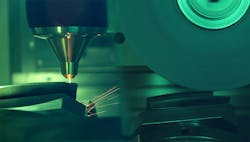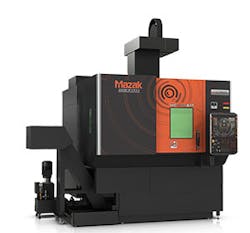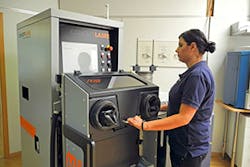How to Introduce Additive Manufacturing Without Hindering Machining
With additive manufacturing taking the entire manufacturing sector by storm, companies that have adopted the various AM capabilities are seeing increased design flexibility, greater supply chain efficiency and quicker access to production parts than ever before. Sometimes referred to as 3D printing, many AM experts and industrial forecasters tout these technologies as the wave of the future. But, before investing time and capital into a complete revision of your production process, consider a step-by-step approach to implementing additive manufacturing into an ongoing manufacturing operation.
Similar (but very different) technologies — The roots of CNC machining can be traced back to the 1940s and the theory of numerical control. Additive manufacturing, although it was pioneered in the 1980s, has emerged much more recently, with numerous advancements over the past decade.
Nonetheless, these technologies are quite similar. Sometimes, both CNC machining and additive manufacturing are sometimes used in the same project and even on the same parts, a combination broadly referred to as “hybrid manufacturing.” This combination, and the various machines developed to perform hybrid manufacturing, allows manufacturers to introduce 3D printing to an established CNC shop with relative ease. Due to the limitations of additive manufacturing (materials and size, to cite two), many machine shops and factories are understandably hesitant to phase out their CNC operations entirely.
CNC mills can be set up to work with different types of metals, woods, thermoplastics and other materials. Most projects that use additive manufacturing rely on thermoplastic materials, including ABS, PLA, nylon or various resins. Although these can be mixed with wood, ceramic or even metal, the small number of compatible materials means that 3D printing is too restrictive for some projects.
Current-model 3D printers, even those meant for industrial use, are also much slower than comparable CNC machines. This is likely to change as the technologies continue to advance, but it remains a point of concern among many manufacturers today.
Additive manufacturing is great for initial design phases of parts and products, along with rapid prototyping of finished designs. The low cost and availability of materials as well as the ability to introduce last-minute design changes benefit any production process, even those involving CNC machining.
Integrating 3DP to your operation — While 3D printing has a lot to offer, it's more appropriate to view these new technologies as a complementary service that can boost productivity and accommodate specialized projects. CNC machines typically run at scale around the clock, with limited supervision, while 3D printing takes some nuance and operator involvement.
Because of this, it makes sense to introduce your staff to the new machines, materials and software properly. Educating and training your staff while focusing on the integration of both production capabilities is critical to maximizing shop productivity.
Some manufacturers find it helpful to set up a private, small-scale project for their machine operators. This gives the design and production staffs the chance to become familiar with the system before putting it to use for a customer. However, this also makes it necessary to take workers away from any current projects or deadlines.
You might also offer advanced training or schooling to your future 3D printer operators. Although the professional certification options for additive manufacturing are limited at this time, more schools and institutions are likely to offer courses as the technology improves. Certain companies provide in-house training for 3D printing, but, again, the narrow scope of the technologies hampers any significant broad-scale efforts.
Try to avoid forcing your current CNC operators into a position that requires expertise in 3D printing. Even in the absence of a solid alternative, it's important to give your employees the freedom and opportunity to make that choice on their own. Not only will this avoid damage to your reputation as an employer, but it will spare the 3D printing industry from any collateral damage and prevent any misconceived notions on behalf of your most valuable staff members.
Demonstrating value via AM — It's important to show how additive manufacturing can complement current operations, jumpstart productivity and, most important, provide job security for your most valuable workers. Touting 3D printing as the next wave of manufacturing might win you some friends around the industry, but it will do very little for traditional CNC operators who sense their roles being phased out by new technology. Reassuring your staff might be the most challenging aspect of the entire process, but it will help to ease the transition into the world of additive manufacturing.
Megan Ray Nichols is an amateur astronomer and environmentalist, and a writer on a variety of scientific topics. She has contributed reports on a range of topics to American Machinist, including gear finishing, Lean manufacturing best practices, the importance of aerospace ceramics, and the “positive disruption” expected from the Industrial Internet of Things. Follow her on Twitter @nicholsrmegan.
About the Author
Megan R. Nichols
STEM writer and blogger
Megan Nichols is a STEM writer and blogger covering a wide range of scientific topics at schooledbyscience.com


